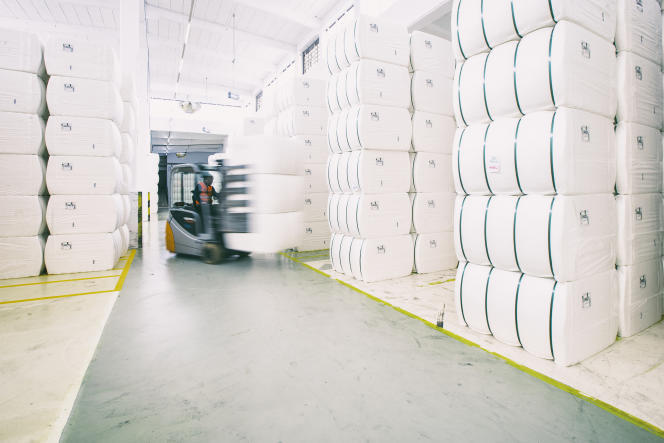In Austria, viscose gets second chance as textile alternative
06 March, 2023

Austrian firm Lenzing extols the virtues of this wood-based fiber, whose manufacturing process aims to be less polluting than before.
"It's the white gold of Lenzing." Nicky Hüpfl relishes this phrase. For more than a decade, this employee of the Austrian Lenzing Group has been giving tours of the 200-hectare historic site built in the 19th century in this community on the banks of the Ager River in Upper Austria, northeast of Salzburg. Many buyers from sports chain Decathlon, along with distributors and manufacturers, are following in Hüpfl's footsteps to learn how the former paper maker transforms wood into a snow-white, fluffy, crisp-to-the-touch textile fiber that will be spun and dyed, then knitted or woven. The tour, which Le Monde took part in, is a long one. Participants are kept corralled and under surveillance.
The company keeps part of its manufacturing process secret, so great is its rivalry with the Indian Aditya Birla, another viscose giant. Listed on the Vienna Stock Exchange, 50% of Lenzing's capital is held by the private foundation B & C, which promotes Austrian industry. Lenzing is one of the last European players in this market born of the 1884 invention of viscose by a Frenchman, Hilaire de Chardonnet. Similar to silk, this material was very popular at the beginning of the 20th century under the name of rayon, but has since been competing with polyester. It could regain its leading position.
The Lenzing Group, which employs more than 7,900 people worldwide, is committed to this. The company has automated a large part of its production, particularly in the building bearing the name of its two brands, Veocel and Tencel. The first of these is used to manufacture a non-woven fabric for cutting wipes and medical pads. The second is spun to make underwear, jeans, T-shirts and sheets. From a control room, a team monitors a score of video screens day and night. In real-time, the screens retransmit the phases of wood pulp transformation – thanks to a non-toxic organic solvent, N-methylmorpholine N-oxide monohydrate – into a honey-like substance which is then worked by spreading, laminating, drawing, rinsing, drying and flaking.
Source: www.lemonde.fr
